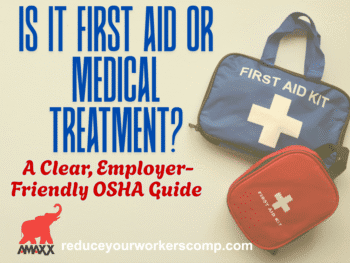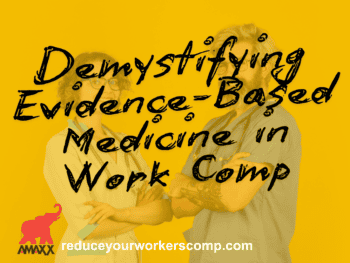
Drug overdoses are the leading cause of death in many jurisdictions. Most employers admit their organizations have been impacted by opioid use; however, few say they feel well prepared to deal with the issue.
While it may seem there is little employers can do to prevent opioid-related problems – or deaths, nothing could be further from the truth. Workers spend a large percentage of their days at work, meaning employers may be in the best position to address the issue of opioids.
7 Ways Organizations Can Mitigate Opioid-Related Problems
Among the steps companies can take to prevent opioid use disorder, addiction, and overdose are:
- Employee education.
- Despite the persistent media coverage of the ‘opioid epidemic,’ most people don’t think they are at risk. But anyone can become dependent on opioids. Opioids can be useful post-surgery or for acute pain on a limited basis. But many people don’t realize when they have been prescribed an opioid or the dangers of longer-term use. They are also unaware of whether they have risk factors that make them more likely to develop opioid use disorder, such as a genetic predisposition or negative social influences. Educating employees on all things opioids can arm them to know what to ask or discuss with their providers and whether they are even being prescribed an opioid. Also, they will be better informed about whether they are developing opioid use disorder or dependency. Employees should understand the many alternatives to opioids for pain management.
Click Link to Access Free PDF Download
“The 6-Step Process To Determine Workers’ Comp Injury Causation”
- Despite the persistent media coverage of the ‘opioid epidemic,’ most people don’t think they are at risk. But anyone can become dependent on opioids. Opioids can be useful post-surgery or for acute pain on a limited basis. But many people don’t realize when they have been prescribed an opioid or the dangers of longer-term use. They are also unaware of whether they have risk factors that make them more likely to develop opioid use disorder, such as a genetic predisposition or negative social influences. Educating employees on all things opioids can arm them to know what to ask or discuss with their providers and whether they are even being prescribed an opioid. Also, they will be better informed about whether they are developing opioid use disorder or dependency. Employees should understand the many alternatives to opioids for pain management.
- Effective drug-free workplace policies.
- While compassion toward employees who are struggling with drug issues is important, it’s also imperative to have clear boundaries about drug use in the workplace. Addiction is covered by the Americans with Disabilities Act. However, using drugs is not; nor is violating an employer’s workplace drug abuse policy. Organizations should have clearly spelled-out policies that detail if and when over-the-counter and prescription drug use is allowed. Companies that have ‘safety-sensitive’ workers, such as those who operate heavy machinery, should mandate that these employees notify HR if they are taking medications that could impair their ability to perform their jobs.
- Manager/supervisor training.
- Employees who are becoming dependent on opioids may show initial signs of impairment. Supervisors and managers should be trained on how to spot potential red flags and what to do in such situations. They need to understand what they should or should not say to the employee and the specific steps to take. Uninformed supervisors run the risk of violating the employee’s privacy on the one hand, or failing to protect the organization from safety hazards, on the other.
- Return to Work
- Injured workers may need to attend medical appointments or make phone calls to supportive services as they return to work. Employers can work with these employees and their providers to make sure they have access to available resources as they recover from opioid-related challenges.
- Supportive culture.
- One of the most important things employers can do to help employees – and themselves – is to create an overall culture of health and well-being, and free from the stigma that so often accompanies substance abuse issues. Employees struggling with potential opioid problems will feel more open to seek help early, rather than trying to hide their issues until they are out of control. Health fairs, employee committees on health and wellness, and outside speakers brought in to discuss substance abuse issues can go a long way to making workers feel it is OK to discuss their problems before they become worse.
- Provide adequate benefits.
- Preventive and treatment services available to employees can greatly mitigate opioid-related problems. Healthcare plans that cover pain management alternatives to opioids, such as massage, cognitive behavioral therapy, or different medications, can eliminate the problem by steering workers to other solutions from the get-go. Employee assistance programs can help workers who may be heading down a bad path get back on track. In addition to having EAPs, employers need to inform workers of their existence and what they offer.
- Work with providers and Pharmacy Benefit Managers.
- Medical providers who are committed to reducing opioid use among workers are extremely valuable to the effort. Employers can also work with providers who are not entirely on board with the efforts to decrease unnecessary opioid use. Working with pharmacy benefit managers can ensure that only a limited supply of an opioid is approved.
Conclusion
While the rate of new opioid prescriptions among injured workers has decreased in recent years, there are still far too many workers who are or have been prescribed these medications. Opioid use disorder, dependency, addiction, and death are still prevalent in society and the workplace. Organizations that understand this and adopt strategies to address it will help their employees and themselves.

Contact: mstack@reduceyourworkerscomp.com.
Workers’ Comp Roundup Blog: https://blog.reduceyourworkerscomp.com/
©2020 Amaxx LLC. All rights reserved under International Copyright Law.
Do not use this information without independent verification. All state laws vary. You should consult with your insurance broker, attorney, or qualified professional.












 The Power of Making Connections In Your Organization
The Power of Making Connections In Your Organization
